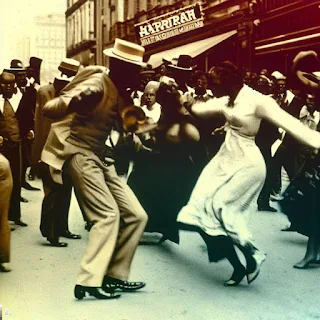The culture of Africa had a major influence on Harlem, New York, shaping the famed Harlem Renaissance.
In the early 20th century, the Harlem Renaissance emerged as a cultural movement in Harlem, New York, showcasing the creativity and talent of African-American artists, writers, musicians, and intellectuals.
The vibrant culture of Africa infused Harlem, New York, with a new energy during the Harlem Renaissance. It inspired the artistic expressions, music, literature, fashion, and theater that continues to influence New York's cultural scene.
The celebration and integration of African cultural elements played a crucial role in reshaping the perception of African Americans and establishing Harlem as a cultural hub, leaving a lasting impact on American history and the global cultural landscape.
How the culture of Africa impacted New York's Harlem Renaissance.
The Harlem Renaissance was a cultural, social, and artistic movement that took place in the 1920s and 1930s, primarily centered in the neighborhood of Harlem, New York City. It was a vibrant and transformative period that celebrated and elevated African American art, literature, music, and intellectualism.
Africa, the cradle of civilization, served as the wellspring of inspiration that ignited a transformative social consciousness and an unwavering commitment to political activism among African Americans. In the midst of Harlem's Renaissance, the influence of Africa was profound and far-reaching, fueling a resolute drive to assert civil and political rights, while demanding the respect and recognition long overdue from the prevailing white society.
Africa's impact on the Harlem Renaissance cannot be overstated. It bestowed upon African Americans a profound sense of history, heritage, and unyielding pride. By embracing the rich tapestry of African culture, the artists, intellectuals, and visionaries of Harlem were propelled to reshape the narrative of the African American experience, challenging the oppressive stereotypes that had plagued their community for far too long.
The artistic expressions that blossomed during this remarkable period were deeply infused with the essence of Africa. Drawing from the vibrant colors, mesmerizing patterns, and captivating forms of African art, Harlem's creative geniuses forged a new aesthetic that resonated with the heart and soul of their African ancestry. The resulting fusion of African and African American artistic styles became a powerful tool for reclamation, reclaiming the dignity, beauty, and complexity of their heritage.
Africa's musical traditions, with their pulsating rhythms and soul-stirring melodies, coursed through the veins of Harlem's music scene. The syncopated beats and improvisational spirit of African music infused the birth of jazz, blues, and other African American musical genres, liberating the spirit and capturing the essence of a resilient and proud people. Africa's musical legacy became a guiding force, empowering African Americans to create a distinct cultural identity that reverberated far beyond the confines of Harlem.
African storytelling, deeply rooted in the oral tradition, became a wellspring of inspiration for the writers and poets of the Harlem Renaissance. Drawing from the richness of African folklore, the power of ancestral narratives, and the lyrical beauty of African languages, these literary pioneers crafted works that unveiled the depths of the African American experience.
Their words resonated with the strength, resilience, and enduring spirit of their African heritage, giving voice to the struggles, triumphs, and aspirations of a marginalized community.
Moreover, the influence of Africa pervaded the realm of fashion, hairstyles, and dance, igniting a cultural renaissance that celebrated the beauty and diversity of African aesthetics. African textiles, traditional garments, and intricate hairstyles adorned the streets of Harlem, symbolizing a proud embrace of African heritage.
African-inspired dances, with their infectious energy and uninhibited joy, became a testament to the indomitable spirit and vitality of the African American community.
Africa, through its profound influence on the Harlem Renaissance, instilled in African Americans an unwavering determination to assert their rights, to demand equality, and to proclaim their rightful place in society.
It infused a sense of history, heritage, and pride that continues to resonate today. The impact of Africa's inspiration on the Harlem Renaissance remains an enduring testament to the power of cultural reclamation and serves as a shining example of the indelible mark that Africa has left on the tapestry of African American identity.









